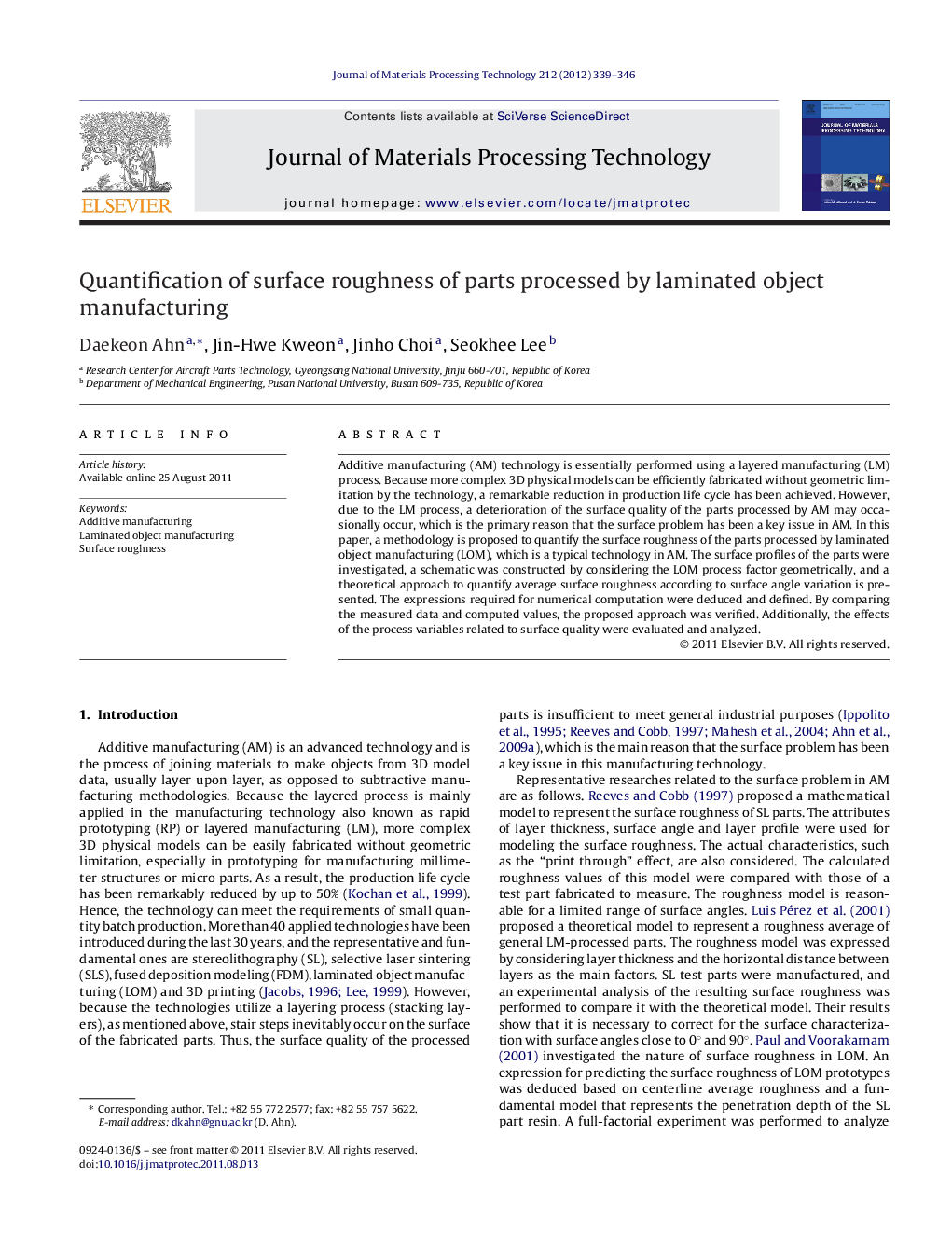| Article ID | Journal | Published Year | Pages | File Type |
|---|---|---|---|---|
| 795967 | Journal of Materials Processing Technology | 2012 | 8 Pages |
Additive manufacturing (AM) technology is essentially performed using a layered manufacturing (LM) process. Because more complex 3D physical models can be efficiently fabricated without geometric limitation by the technology, a remarkable reduction in production life cycle has been achieved. However, due to the LM process, a deterioration of the surface quality of the parts processed by AM may occasionally occur, which is the primary reason that the surface problem has been a key issue in AM. In this paper, a methodology is proposed to quantify the surface roughness of the parts processed by laminated object manufacturing (LOM), which is a typical technology in AM. The surface profiles of the parts were investigated, a schematic was constructed by considering the LOM process factor geometrically, and a theoretical approach to quantify average surface roughness according to surface angle variation is presented. The expressions required for numerical computation were deduced and defined. By comparing the measured data and computed values, the proposed approach was verified. Additionally, the effects of the process variables related to surface quality were evaluated and analyzed.
